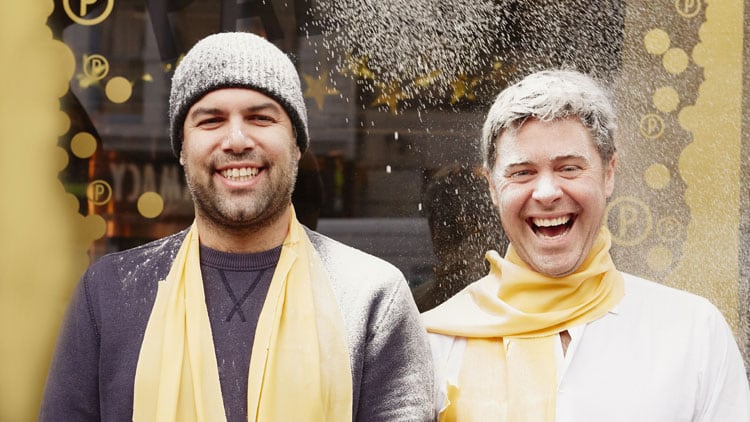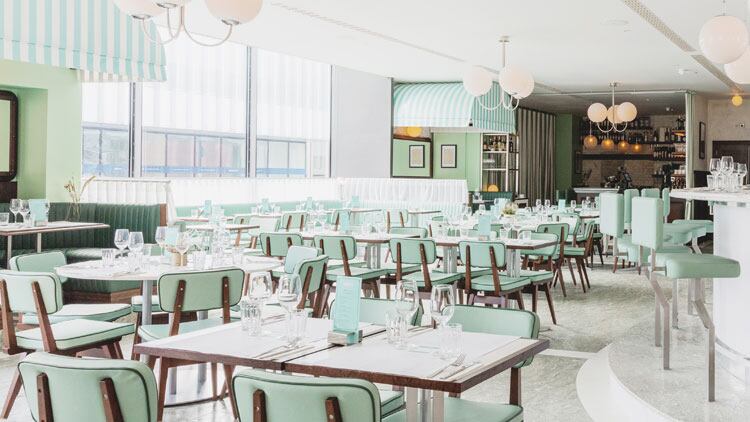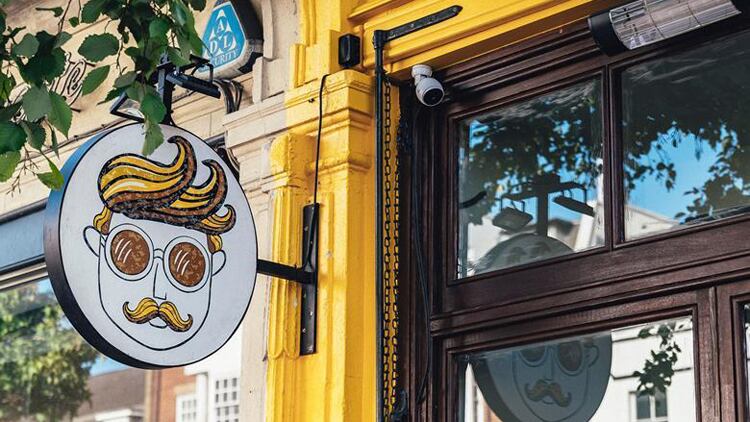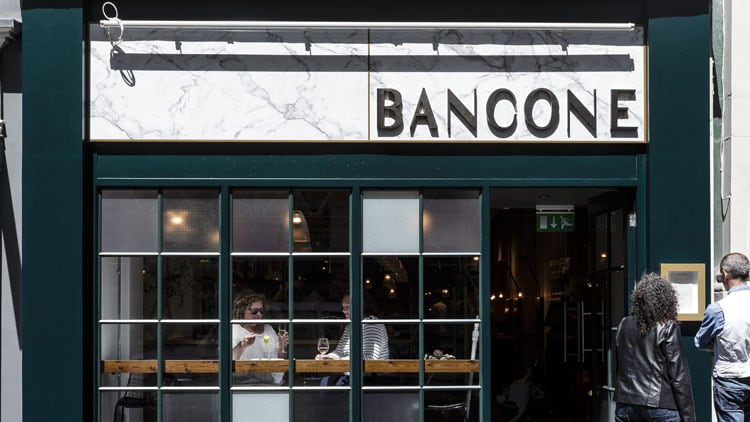Walk past the front of Padella’s flagship London restaurant at any given mealtime and a distinctive sight will greet you. A bustling queue, often more than 50 people deep, neatly cordoned off to the side of the restaurant, and
a sign at the front advising customers to either join the line physically or virtually via an app. Unless you arrive too late that is, in which case you’ll likely be met with a different sign, gently informing you that the service has already reached capacity.
Located at the fore of Borough Market and just a stone’s throw away from London Bridge, Padella has been synonymous with queuing since it launched in 2016. A quick scroll through its TripAdvisor page reveals multiple anecdotes from diners waiting, sometimes for more than an hour, to get a seat in the 60-cover restaurant. Maybe unsurprisingly, therefore, it triumphed in the Worth the Queue category at the Evening Standard London Restaurant Awards.
“We knew the restaurant would be popular, but we never gauged quite how busy it would be,” says Tim Siadatan, who co-founded Padella with friend and business partner Jordan Frieda. “There was plenty of hubbub surrounding the soft launch, but we assumed that would subside once we opened fully. Then, on the morning of our first official lunch service, we noticed people gathering outside, and before we knew it the queue had stretched further than we could see from the front door. We stood there staring and thought ‘holy shit’.”
Fast-forward four years and the Padella pair are preparing to open their second restaurant, which is set to launch on Phipp Street in Shoreditch at the end of February. Siadatan is keen to point out that Borough Market itself was integral to their first restaurant’s success, describing it as the epicentre of where London foodies look to spend their disposable income. Whether Padella can make a similar impact in what is arguably a less prime location remains to be seen. One thing’s for certain though, this time there won’t be a queue, or at least not a physical one.
“Given how technology has developed, no one should need to queue outside a restaurant for two hours anymore,” says Frieda, referring to the WalkIn app the pair have used to manage the crowds at Borough Market since the summer. “At the new site we’re not supposed to have large groups congregating at the front of the building or down the high street, and we have no interest in changing the concept. So the app is crucial.”
The notion of Padella not having a long line of people outside is hard to imagine, but what’s striking is that neither founder appears to even expect such a reception second time around. “I don’t foresee there being the same groundswell reaction when we open in Shoreditch,” says Siadatan. “While we appreciate what it represents, we don’t want to just be defined as the restaurant that has a queue.”
“The question people need to ask themselves is, do they think a restaurant like this is only relevant when it has a queue outside?” adds Frieda. “And for us, the answer is no.”
Slowly does it
By their own admission, Frieda and Siadatan’s decision to open a second Padella restaurant has come quite late. In the intervening years, the fresh pasta space both in London and further afield (see Not just a London trend) has exploded, but rather than grow with it, the pair have bided their time, becoming relative bystanders in the process. Both speak candidly, with a focus and enthusiasm that highlights just how much they care for their craft.
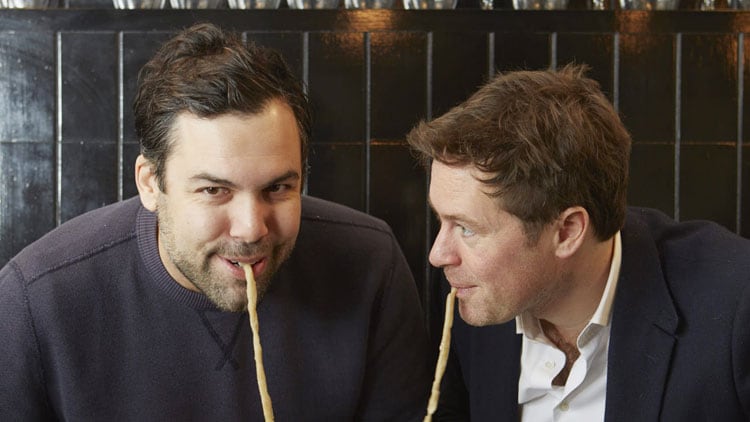
“People were telling us six months after we opened in Borough that we should be looking to establish another 10 sites as quickly as possible,” says Frieda. “But that’s never been our vision for this brand, or even part of our skillset.”
Indeed, while the pair say that they had been actively looking for a second restaurant space for a while (sites in Bermondsey and Brixton were both considered), the expansion was actually born out of a need to grow Padella’s bakery space, which currently occupies a small area within Borough Market itself, and is where the pasta dough and the bread for both Padella and the duo’s other restaurant venture, Trullo in Highbury, is prepared.
“For us, making sure we know the food we serve is of a high standard will always be the most important thing,” says Siadatan. “Growing the bakery was crucial to any expansion plan as it allows for more efficiency in preparing the key products that make Padella what it is, and by taking our time we’ve also been able to refine our cooking processes. We weren’t ready to open a second site before, but we are now.”
Beyond the extended bakery space, the larger dining area (the new restaurant will have room for 70 covers), and the addition of a deep fat fryer in the kitchen that allows for a selection of fritti to be added to the menu, the differences between the original Padella and its new Shoreditch sibling will be minimal. The menu will remain focused on a selection of freshly-made pasta dishes, with the portion sizes reasonable and the prices positioned to ensure the restaurant remains approachable to as broad a church as possible. Signature options will include gnocchi with nutmeg butter (£4); pici cacio e pepe (£6.50); and pappardelle with eight-hour Dexter beef shin ragu (£10).
“We never felt like pasta was as accessible in London as it could be,” says Frieda, discussing the development of Padella. “So we set out to create a restaurant reminiscent of the canteen-style concepts you find across Italy, where mind-blowingly good food is accessible to everyone.”
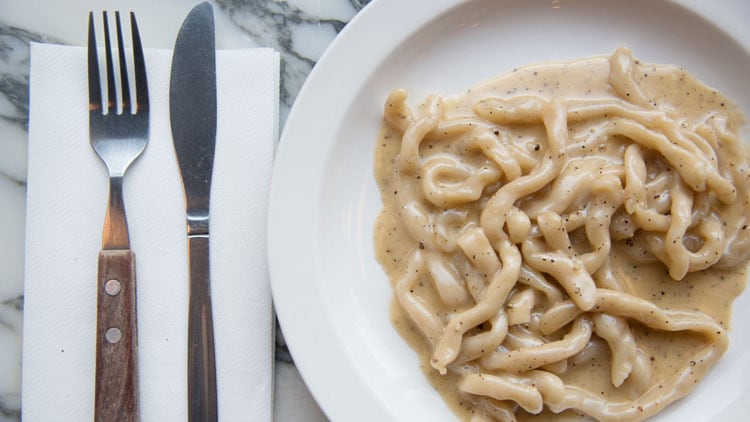
At the time Padella launched, chains such as Strada, Carluccio’s and Jamie’s Italian dominated the high street. To a casual observer then, the notion of another restaurant serving staple Italian cuisine may not have appeared to be particularly innovative – or indeed sensible – on the surface. But Frieda and Siadatan’s approach was noticeably different, the pair driven by an unwavering ethos to always serve a top-quality product.
“The beauty about pasta is that even the best quality base ingredients are low cost, and for us that’s important,” says Frieda. “It means that when it comes to preparing the sauces, we’re able to use premium products and still ensure the price for a plate of pasta remains affordable. In the past, the mindset of restaurateurs has too often been about improving margins by sourcing inferior products, but the fact is when you work with pasta you have the freedom and the ability to use a higher standard of ingredient.”
The better pasta movement
Frieda and Siadatan first devised the idea for Padella back in 2006, but took nearly 10 years to bring the idea to fruition. “Everyone seemed surprised when we first pitched it as a concept,” says Frieda. “Lots of people told us no one would ever want to visit a restaurant that was solely focused on pasta.”
Unable to raise the funds needed, the pair instead opted to pursue another idea; one that offered a more traditionally Italian menu. So, in 2010, they opened Trullo. “Ultimately, the fact we weren’t able to open Padella first was a good thing,” says Siadatan, who graduated from the first intake at Jamie Oliver’s Fifteen, and cooked St John and Moro before joining forces with front of house expert Frieda, whose own CV includes a stint at The River Cafe.“Neither of us had run a restaurant before, and having Trullo afforded us a creative space that allowed us to polish our idea for Padella before we opened.”
Padella’s visual theatre has been key to its success (something Frieda and Siadatan intend to double down on once they open in Shoreditch). Every morning the chefs roll out 150 metres of fresh pasta dough from behind the windows of the Borough Market restaurant, and each day around 750 portions of pasta are served by the kitchen.
On a broader scale, though, Padella’s accomplishments can perhaps best be recognised in the wider space it subsequently created. Where once they stood practically alone, Frieda and Siadatan will open Padella’s second site amid an intensely competitive marketplace for which they themselves are partly responsible. Suffice to say, it wasn’t just with diners that Padella struck a chord.
“I describe it as the ‘better pasta movement’,” says chef restaurateur Stevie Parle, who launched his own fresh pasta brand, Pastaio, in Soho back in 2017. “For operators, the appeal is understandable. Pasta is a cost-effective product, and creatively it offers a far-reaching canvas for flavour. It’s not radical, but it is appealing; we’re taking something with which everyone is familiar and improving upon it.”
Parle had been interested in exploring a fresh pasta-focused restaurant before Padella came along, and he saw its success as a vote of confidence in the potential for the market. “I’d been wanting to do it for ages,” he muses. “At Rotorino, an Italian restaurant I’d previously run, pasta sales were constantly climbing. Even though it was positioned as a primo on the menu, people would order it as their main.”
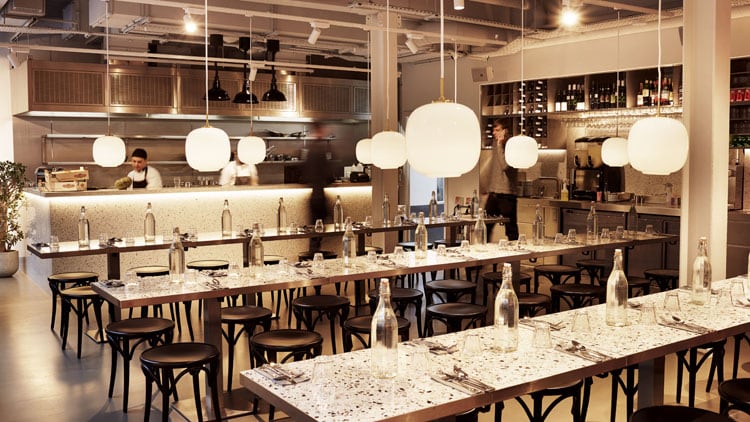
Pastaio may have been one of the first fresh pasta brands in London to open in the wake of Padella’s initial success, but it certainly wasn’t the only one. Prior to it there was Andrew Macleod’s Emilia’s Crafted Pasta, which opened its first site at St Katharine Docks at the tail end of 2016. In 2018 they were joined by Will Ellner and David Ramsey’s Covent Garden-based Bancone; and iconic deli brand Lina Stores, which branched out to launch a pasta bar and restaurant in Soho.
Then, last summer, Franco Manca co-founder Bridget Hugo opened Strozzapreti in KERB’s Seven Dials Market; and Claudio Vescovo and Gianluca D’Angelo, who previously founded neighbourhood-style pizza concept Zia Lucia, opened Berto next door to their flagship pizzeria on Highbury’s Holloway Road. And in the autumn, restaurant and pasta workshop Officina 00 opened in Shoreditch.
All feature a predominately pasta-based menu, with generally comparable portioning and price points. And all, it would appear, have benefited from the fallout of Padella’s fresh pasta boom, with Emilia’s, Bancone and Lina Stores having already moved on to second sites, with Pastaio preparing to do the same this month.
“Padella proved there was a huge market for accessibly priced, high-quality fresh pasta brands and that diners wanted to be a part of it, providing it was done properly,” notes D’Angelo. “It’s a concept that’s thrived as the restaurant market has developed. Great fresh food being served affordably is appealing to diners from across the spectrum, and the competition that has created means everyone has to be at the top of their game now.”
Remaining relevant
With several major fresh pasta brands now jostling for attention in London, being able to easily identify a unique selling point is crucial for this new swell of operators. Vescovo and D’Angelo claim to be the only ones that offer fresh, gluten-free pasta; while Parle and Hugo both say they offer a personal appeal that’s built around their respective reputations. “My food is less authentic, less Italian, with a focus on high-impact flavours,” says Parle. “I don’t want Pastaio to be seen as a foodie restaurant. The emphasis is on positioning it as a mainstream brand that’s effective across a large demographic.”
Lina Stores, meanwhile, is keen to present itself not as simply another pasta restaurant, but instead remain true to the brand’s Italian grocery roots. “One of the biggest challenges, particularly in this increasingly saturated restaurant space, is staying relevant,” says Chris Miller, founder of hospitality incubator White Rabbit Fund, which invested in Lina Stores prior to it opening its Soho pasta bar. “The original Lina Stores deli has been one of London’s go-to places for Italian produce for 75 years, which gives us space to evolve the menu differently.”
As well as pasta, Lina Stores’ recently opened second restaurant in King’s Cross features a range of larger secondi dishes, including a veal rib eye with salsa verde to share that’s priced at £36.
An obvious area for comparison is between this ‘better pasta movement’, and the explosion in Neapolitan pizza restaurants, which dominated the restaurant landscape a few years back. “In some ways, pasta is the new pizza,” says Hugo, who helped spearhead the UK’s artisan pizza movement with Franco Manca, which she launched in 2008 with Giuseppe Mascoli. “The whole thing is an evolution. The growing excitement about pizza that we saw stemmed from wider access to better quality street food."
"That revolution really is a key factor as to how people have become more educated about international flavours and also more experimental with food, and pasta is a perfect for people wishing to explore these things.”
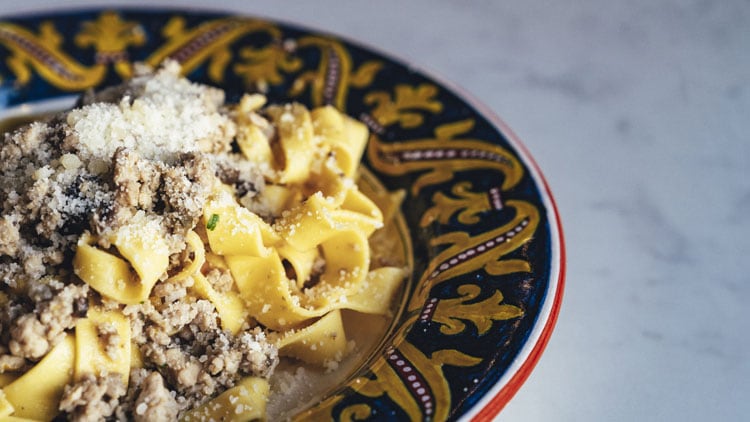
There’s a general sense, though, that this pasta movement could ultimately never carry the same cultural impact. “Pizza is a far more resilient product, which means it is also perfectly placed for the delivery sector,” says Frieda. “Pasta is different, it needs to be eaten as soon as it’s served otherwise it gets too cold. And then the fat in the sauce congeals with the pasta, which is just unappetising.”
Parle does offer delivery options at Pastaio, but agrees broadly with Frieda’s comments. “From an operator’s point of view, pasta doesn’t quite have the same delivery appeal as pizza,” he says. “We do Deliveroo, and we’ve spent a lot of time working to make sure we deliver a product that’s as good as what you can get in the restaurant, but I don’t think it will ever have the same impact.”
Stretching the pasta players
A clear area of consensus is that there’s still room for operators to grow within this market. “It feels like the evolution of this pasta movement has been quick, but the pace is nothing compared to other foodie trends that have erupted in the past 10 years,” says Parle. “Ultimately, it’s still quite a small space, and one that offers plenty of breathing room.”
Parle set up Pastaio with scalability in mind and it’s notable that his recently opened kiosk site at Market Halls’ monolithic new venue just off Oxford Street, as well as his soon-to-open second restaurant location at Westfield London, shows a keenness to explore the potential for developing the concept within different environments. “For me the focus is on making sensible location choices and ensuring the growth of the business is sustainable,” he says. “I’m not looking to expand the brand on an industrial scale, but I can definitely see a clear route to five sites.”
Miller is eyeing a similar number, although he is more open-minded about the potential for expanding on a larger scale. “The whole landscape has changed dramatically, and the idea of anyone rolling out 10 restaurants a year isn’t feasible anymore,” he remarks. “In time, we may look to grow Lina within London, but there’s also opportunities to branch out further; and not just across the UK. Pasta is a global product, and growing the business internationally isn’t out of the question. Further down the line I could envisage a Lina Stores restaurant opening in Amsterdam, Berlin, or maybe even Shanghai.”
Curiously, those appearing to exercise the most caution when the subject of scalability is raised are Frieda and Siadatan. “When you look to roll out a restaurant concept on any sort of scale, eventually something has to give,” says Frieda. “Fresh pasta isn’t a product that allows for massive expansion, and I don’t know how many sites you could open while still managing to maintain a high level of quality. We hope we sustain it across two locations, but it’s not a given and we’re not very good at allowing for compromise.”
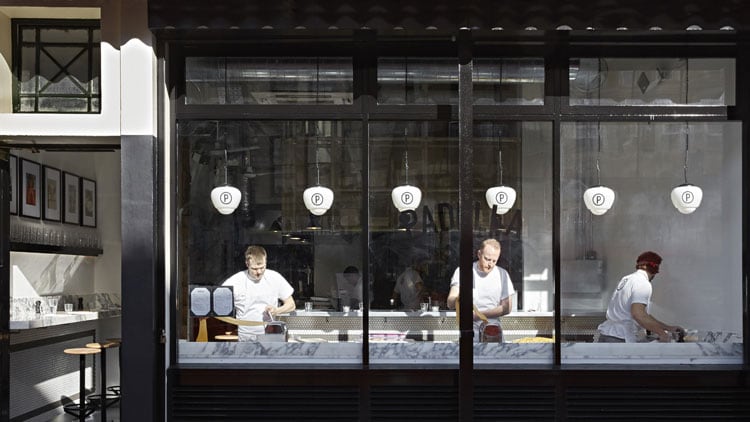
The question, though, is do the duo think they can take Padella beyond a second location? Both are modest in their vision, but also optimistic. “The only people who think you can take a product like ours and scale it in any sort of significant way is someone who doesn’t cook,” continues Frieda. “If we can go to three sites and retain the same levels of consistency then that’s amazing, but I don’t think either of us imagine it could go much further than that.”
“The restaurant game is about longevity,” adds Siadatan. “Sure, pasta is having a moment right now; just as pizzas and burgers have previously. But this movement has been building for a while, and I suspect it’ll reach its peak quite soon. And after that we’ll inevitably see a decline.
“The challenge for all of us in this space will be working out how we can remain relevant in those subsequent years.”
Not just a London trend
Jordan Frieda and Tim Siadatan are careful to point out they aren’t solely responsible for the current fresh pasta boom, noting that Pasta Loco in Bristol (which follows a similar format) opened around the same time as Padella. Owned by cousins Ben Harvey and Dominic Borel, Pasta Loco has spawned two siblings: Pasta Ripiena and La Sorella, also located in Bristol.
Elsewhere, Brighton and Hove's Cin Cin is up to two sites; Manchester has seen the likes of Sugo and The Pasta Factory make an impact, and late last year Sarto opened in Leeds proclaiming itself to be the city centre’s ‘first dedicated pasta restaurant’. “Pasta is a great vehicle, which allows you to be imaginative when building dishes and creating flavour profiles,” says Sarto head chef Yanni Chapman. “It’s a very honest product, and a great way to showcase brilliant, locally sourced produce.”
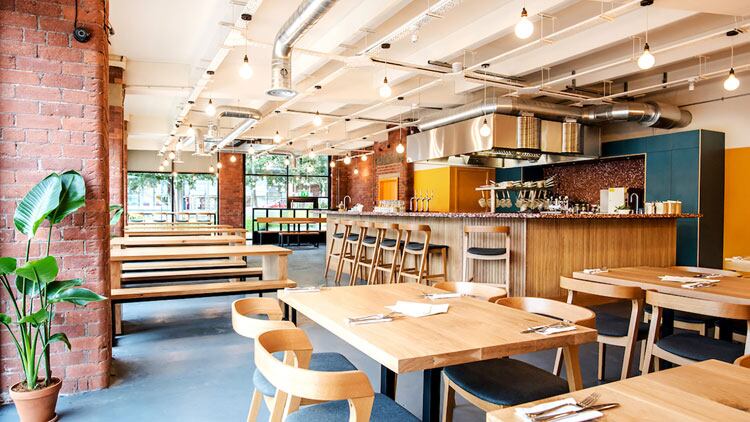
The Sarto team looked at the likes of Sugo and Padella when building the menu. “Our prices are set as low as possible, with the most expensive dish [beef ragu fettuccine] £9.50. Being in Yorkshire, we have to play to our market, which demands a lower cost. The high turnover allows us to continue using premium ingredients."
And what of Sarto’s plans? “There’s an interest in doing more,” says Chapman. “At the moment, though, our focus is on fully establishing the brand. The menu is concise, and our main ethos is to ensure the food tastes great and is approachable to a wide market. But we want to broaden the offer in the coming months by launching a series of events, including wine evenings and cheese tastings, which will allow us to combine accessibility with exclusive experiences.”
This feature first appeared in the January 2020 issue of Restaurant magazine, the leading title for the UK's restaurant industry. For more features, comment, interviews and in-depth analysis of the restaurant sector, subscribe to Restaurant magazine here.

